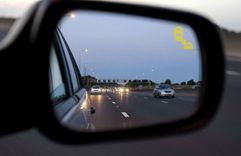

Blind-spot monitoring uses a set of sensors mounted on the side mirrors or rear bumper to detect vehicles in the adjacent lanes. If the sensors detect something, they'll alert you via an audible and/or visual warning. Some vehicles even use a camera as the main part of the system or to complement the sensors.
As the cost of the tech has gone down, the safety and convenience feature is now offered across the market is not just on luxury vehicles.
You'll often find blind-spot monitoring bundled with a rear cross-traffic alert feature, which detects vehicles, objects, or a pedestrian in the car's way when reversing out of parking spots.
Blind-spot monitoring is one of the most useful tools for keeping safe. If you pay attention to the audible or visual warnings, they can minimise your changes of merging into another vehicle. Systems with collision prevention functionality add further value to blind-spot monitoring because they actively steer or brake, adding another layer of security during your drive.
More price-conscious buyers may scoff at the tech and correctly note that drivers (mostly) coped without these features for decades. That's true, and if you're buying an especially low-priced new car, you'll probably be fine without it.
Car manufacturers that enable a blind-spot monitoring system within their cars actively make their cars a lot safer not only to the occupants of that car but also to vehicles around it. This kind of active safety technology is the way forward and should be incorporated by more car manufacturers in the years to come.